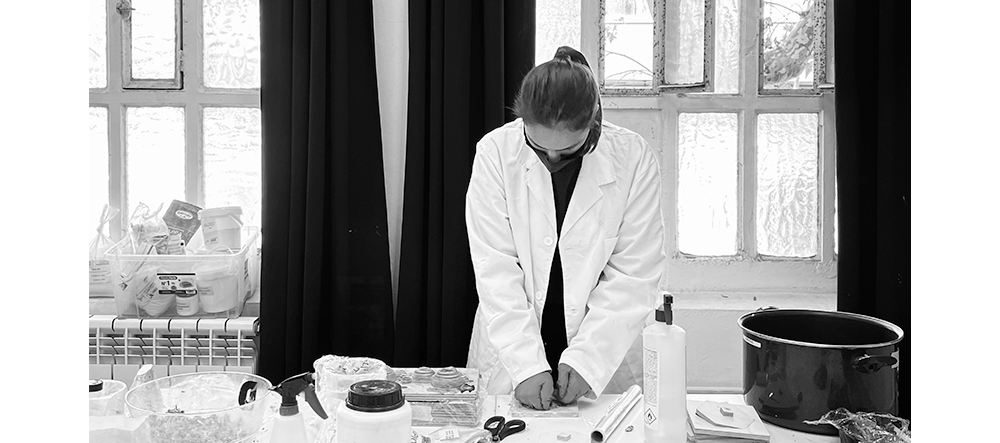06. BioFabricating Materials¶
This week I worked with on biofabricating materials, we explored different ways to create and fabricate biomaterials. The aim is to find alternatives to plastic and try finding a greener option that is sustainable, biodegradable and helps minimising waste.

During this week's presentation we got familiar with many biomaterials, based on different materials like Alginate, Agar-Agar, Gelatin, Kombucha, Pine resin and Starch. This week we also worked with mycelium, learnt how to grow it and cast it into molds.
Grown Materials¶
Myco-Composites¶
Mycelium is the foundation of mushrooms. It feeds on natural sources and releases an enzyme that fuses molecules together. Once the mushroom feeds on the organic matter, it digests it and colonizes the medium, solidifying it together. Mycocomposites have diverse proprieties: Thermal insulation, light, excessive resistance to moisutre and steam, fireproof and water resistance.
The mycelium proprieties (strength, rigidity) are associated with the proprieties of the mushroom: Reishi mushrooms myceliums are going to be greater inflexible and resistant than Oyster mushroom mycelium. We used Reishi strain for this experiment.
Tools¶
- Bowl
- Plastic bag
- Gloves, alcohol + spray bottle
- Face mask
- Lab coat
- Pressure cooker
To develop mycellium, it must first be grown on an agar plate, then positioned to spawn in a substrate and scaled as much as develop at the substrate. Mycellium must be grown on malt agar (2% w/v malt extract and 2% w/v agar in deionized water).
We started our workshop with Jessica Diaz, who’s been working with different types of mycelium for the past 3 years. We divided the process in 2 phases, the first one is how to grow our own objects,by growing mycelium in different moulds, and the second one is the inoculation of mycelium, how to grow it..
Growing objects¶
We started growing our objects with an already grown-inoculated bags of Reishii mycelium, this was all crowded so we have to separate it into small pieces so we can mix it with four and distilled water to make like a “mycelium dough”
always work with gloves, apron and your hair tied.

Kombucha¶
Bio-materials¶
Gelatine¶
- Put your pot with water to heat
- Add ingredients one by one and keep stirring regularly
- Add pigment/dye in the pot for a better mix and spread of colour
- Always casted on synthetic materials because it's like a glue when liquid, it sticks to natural fabrics.
- Needs a cool temperature to solidify
- Elasticity varies with the amount of glycerine. Same amount of glycerine as gelatine gives most elasticity.
Gelatin+